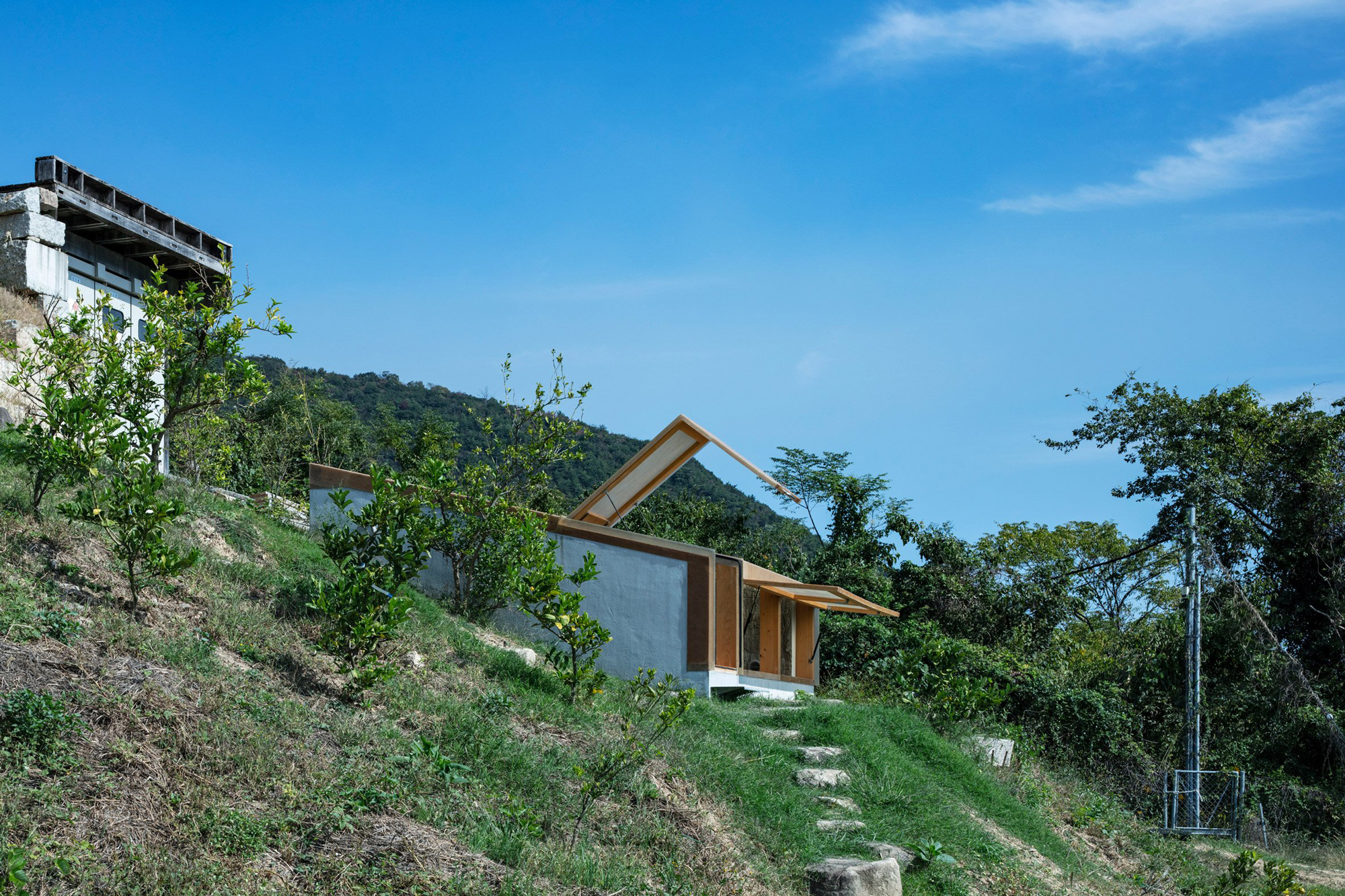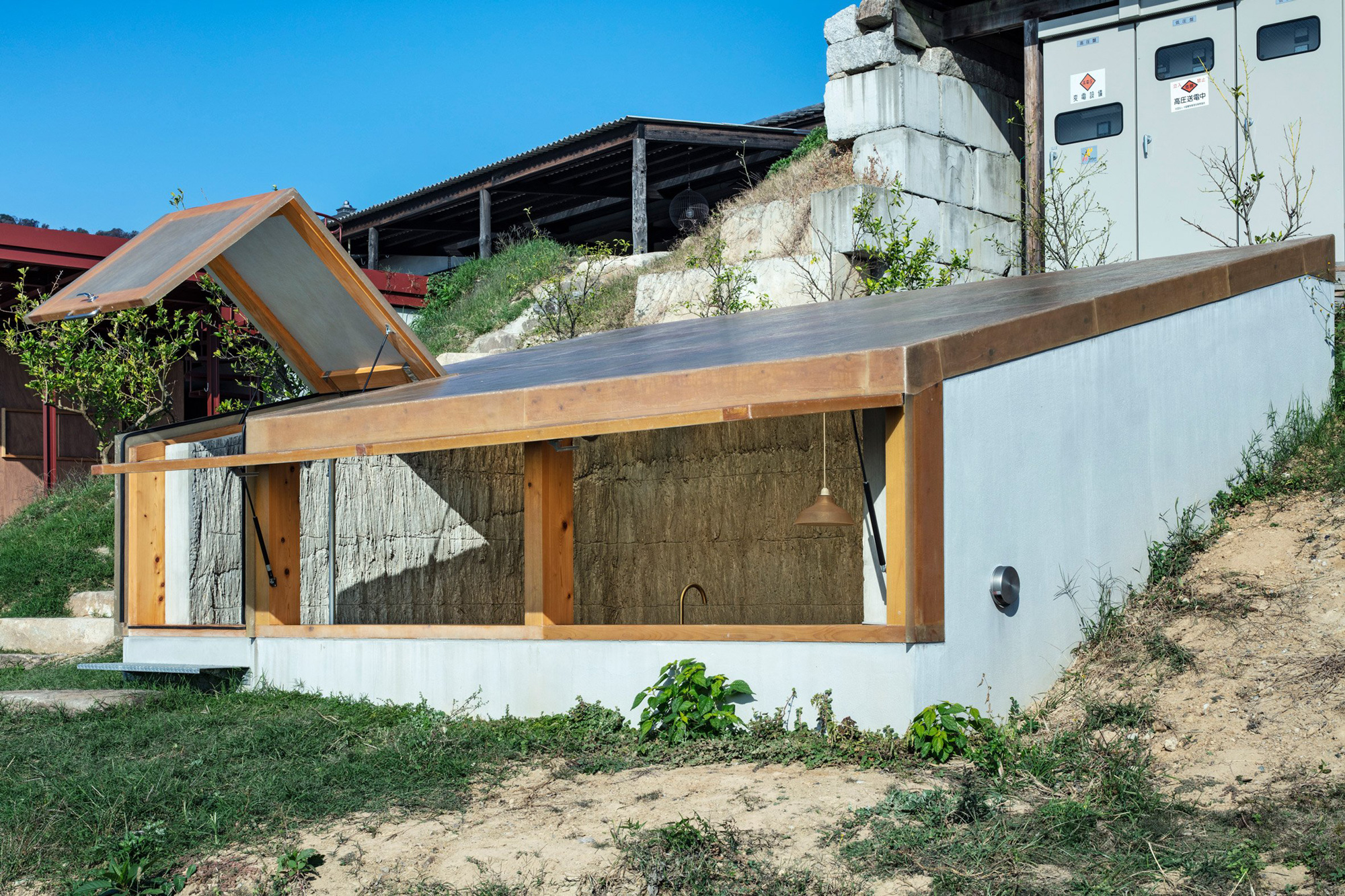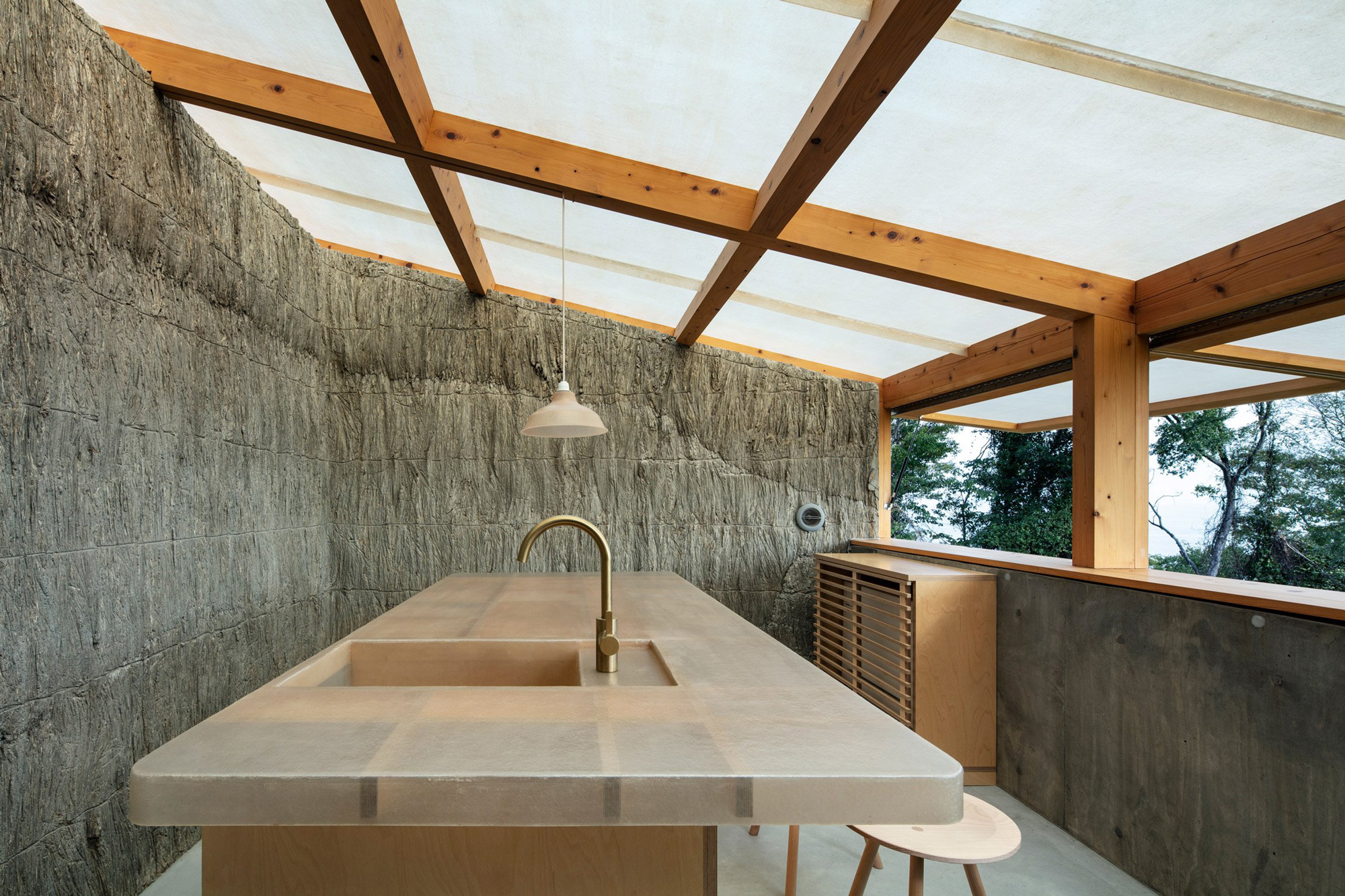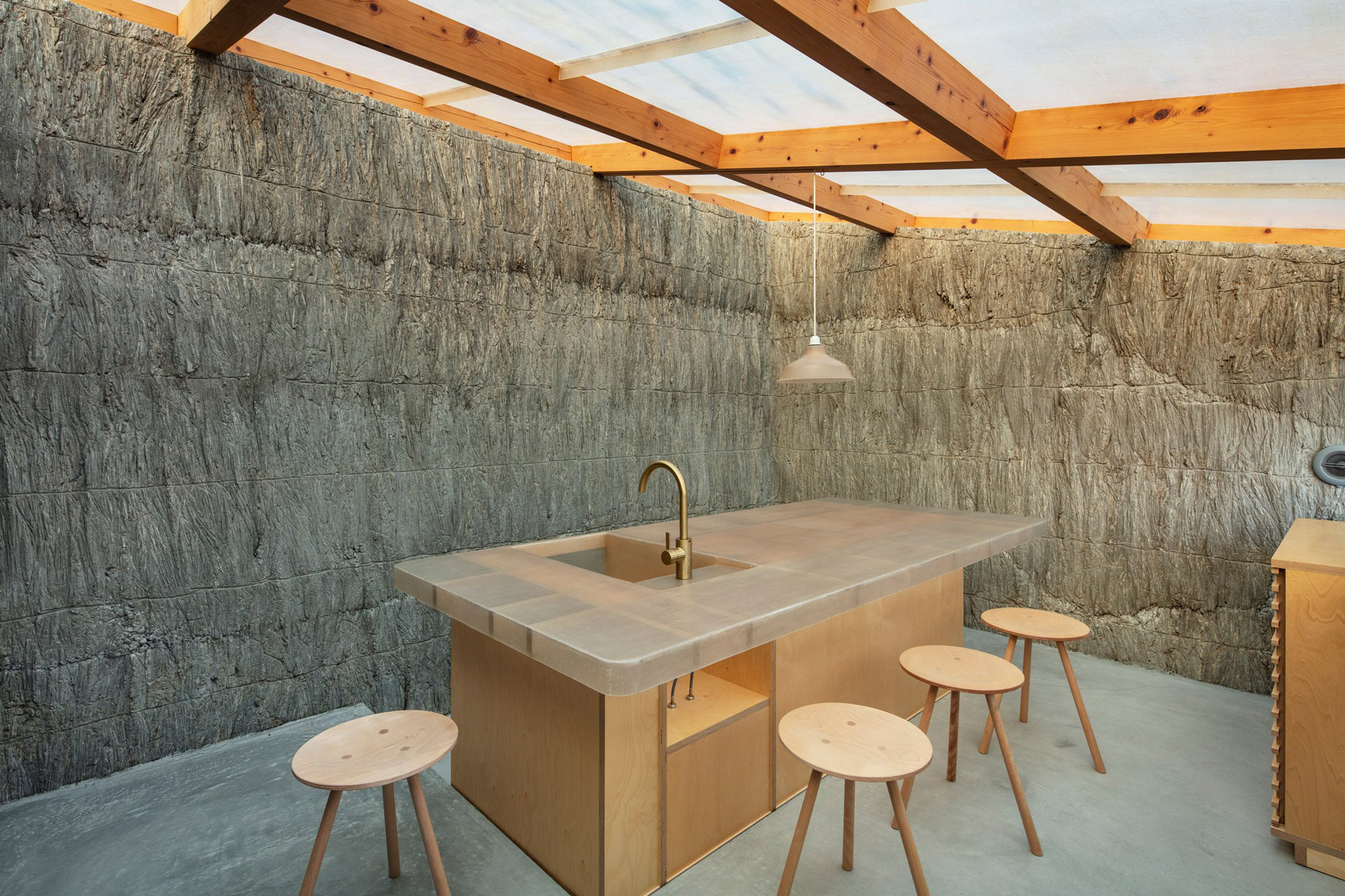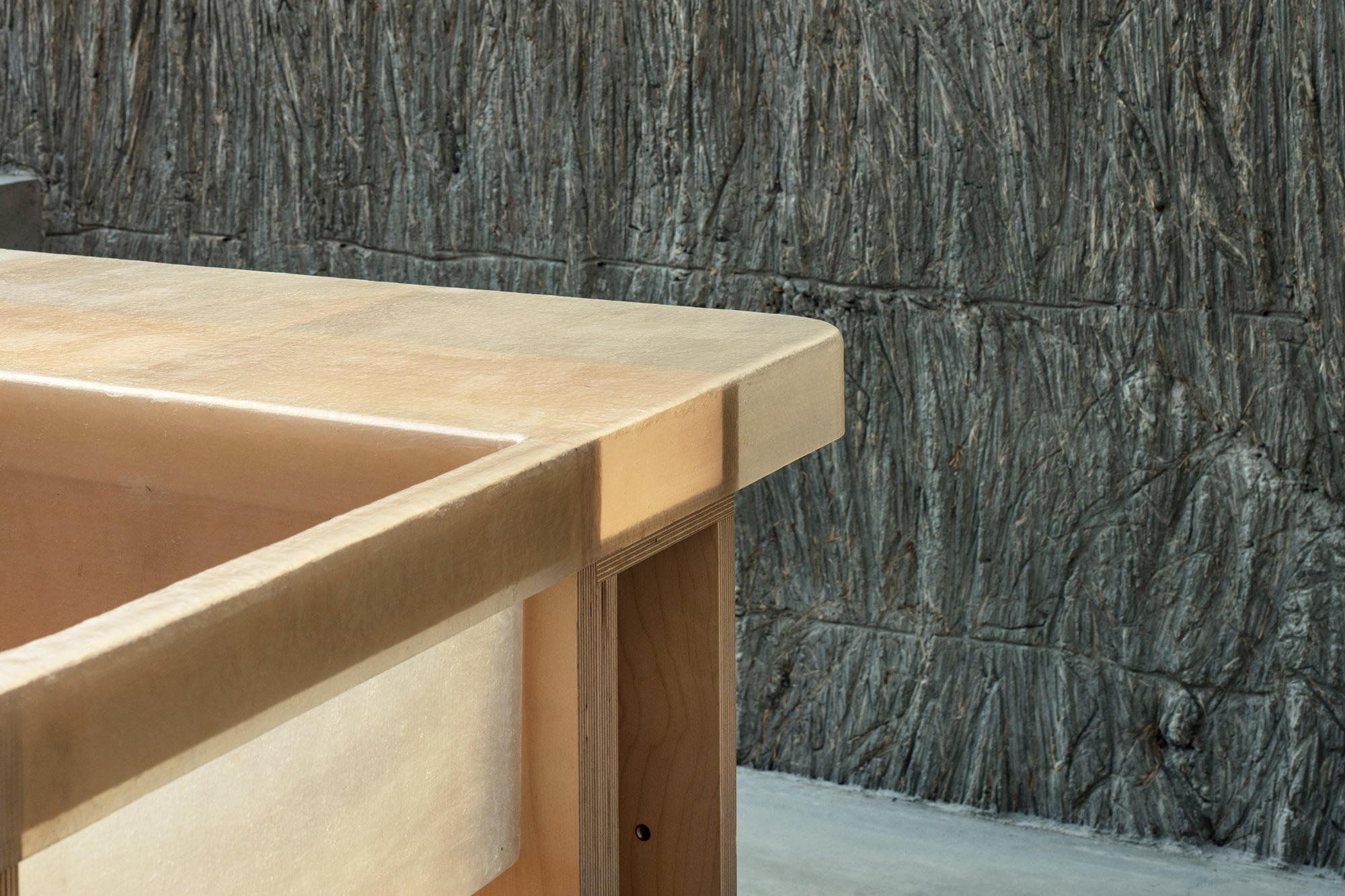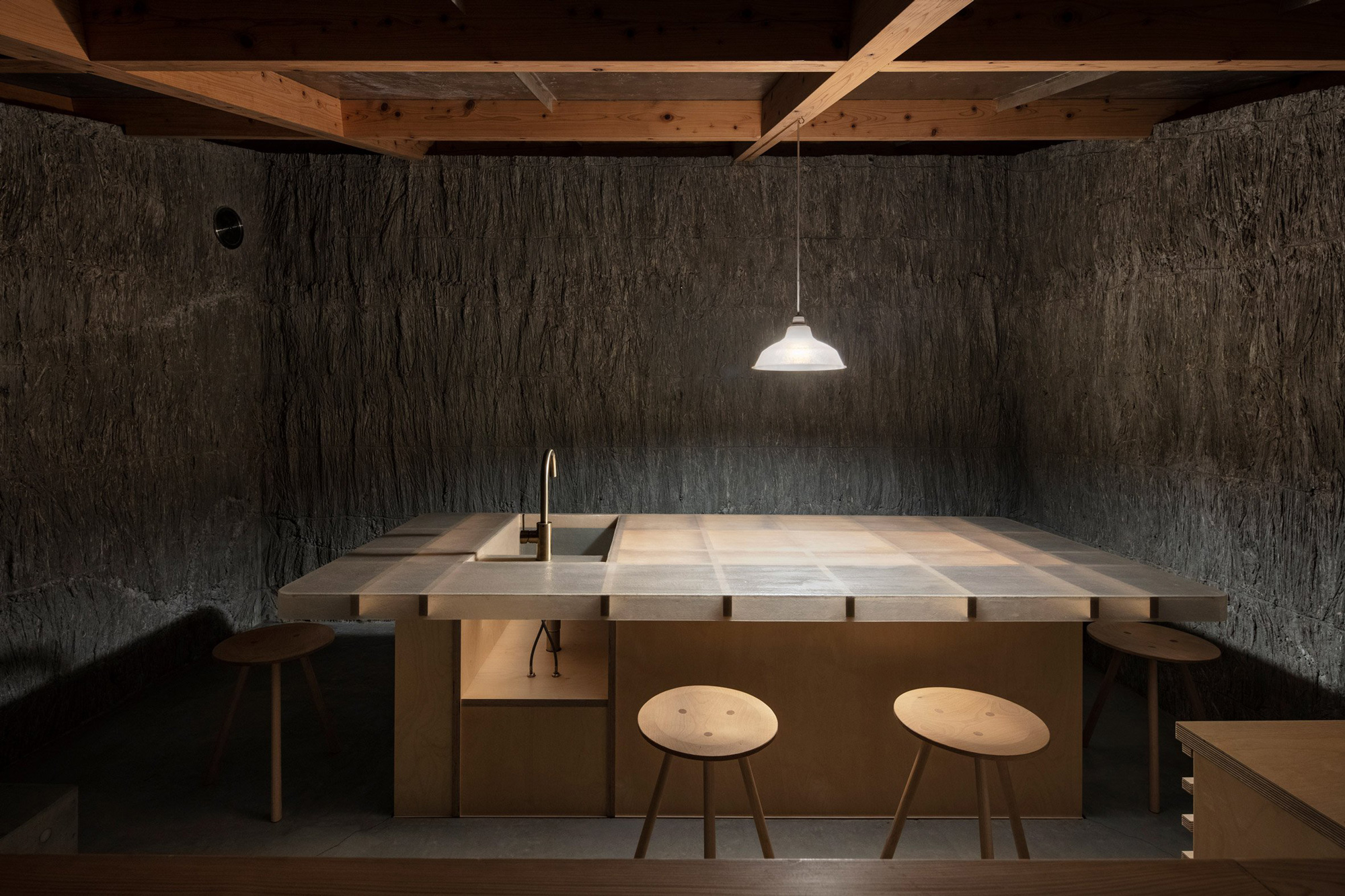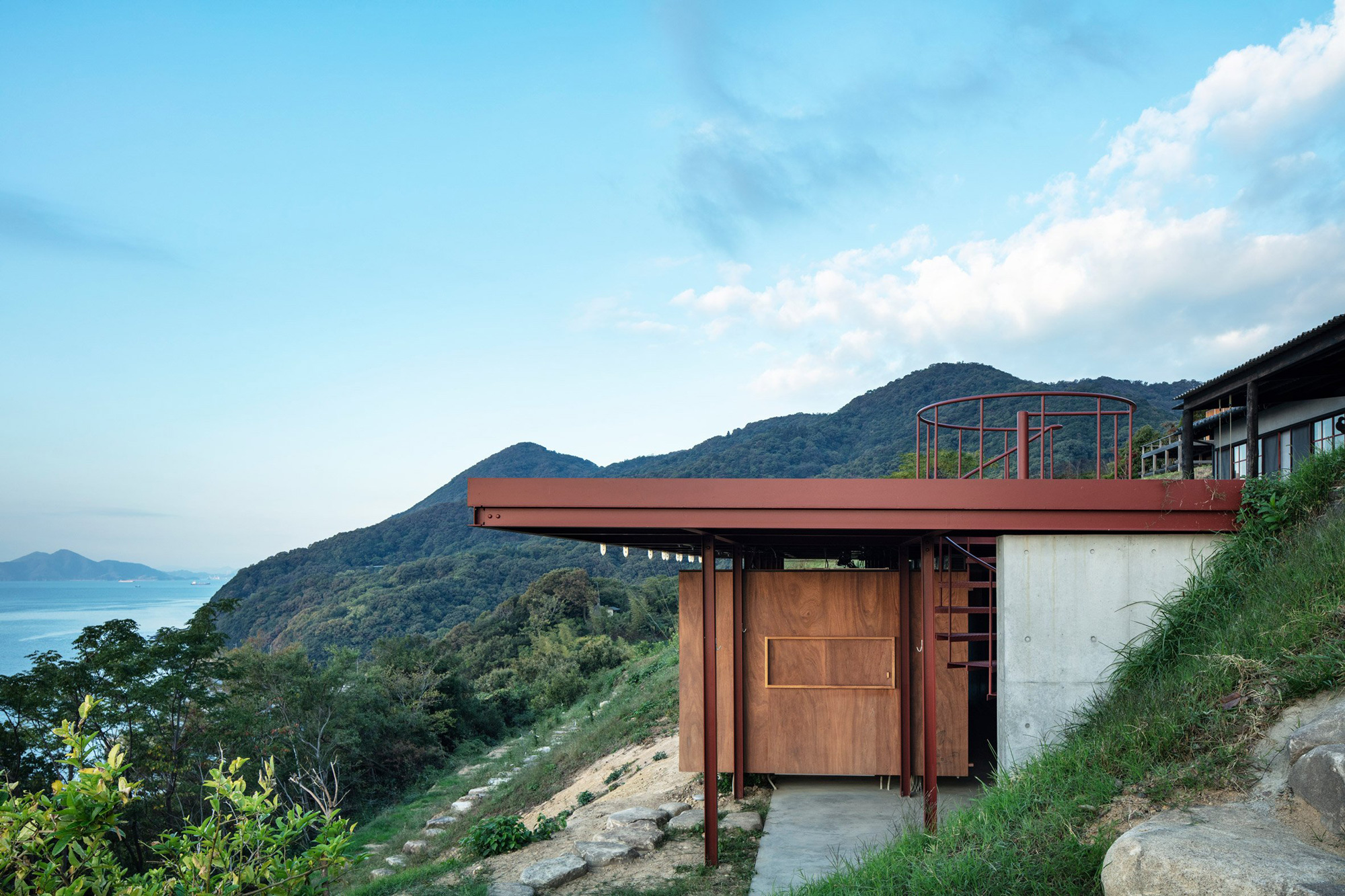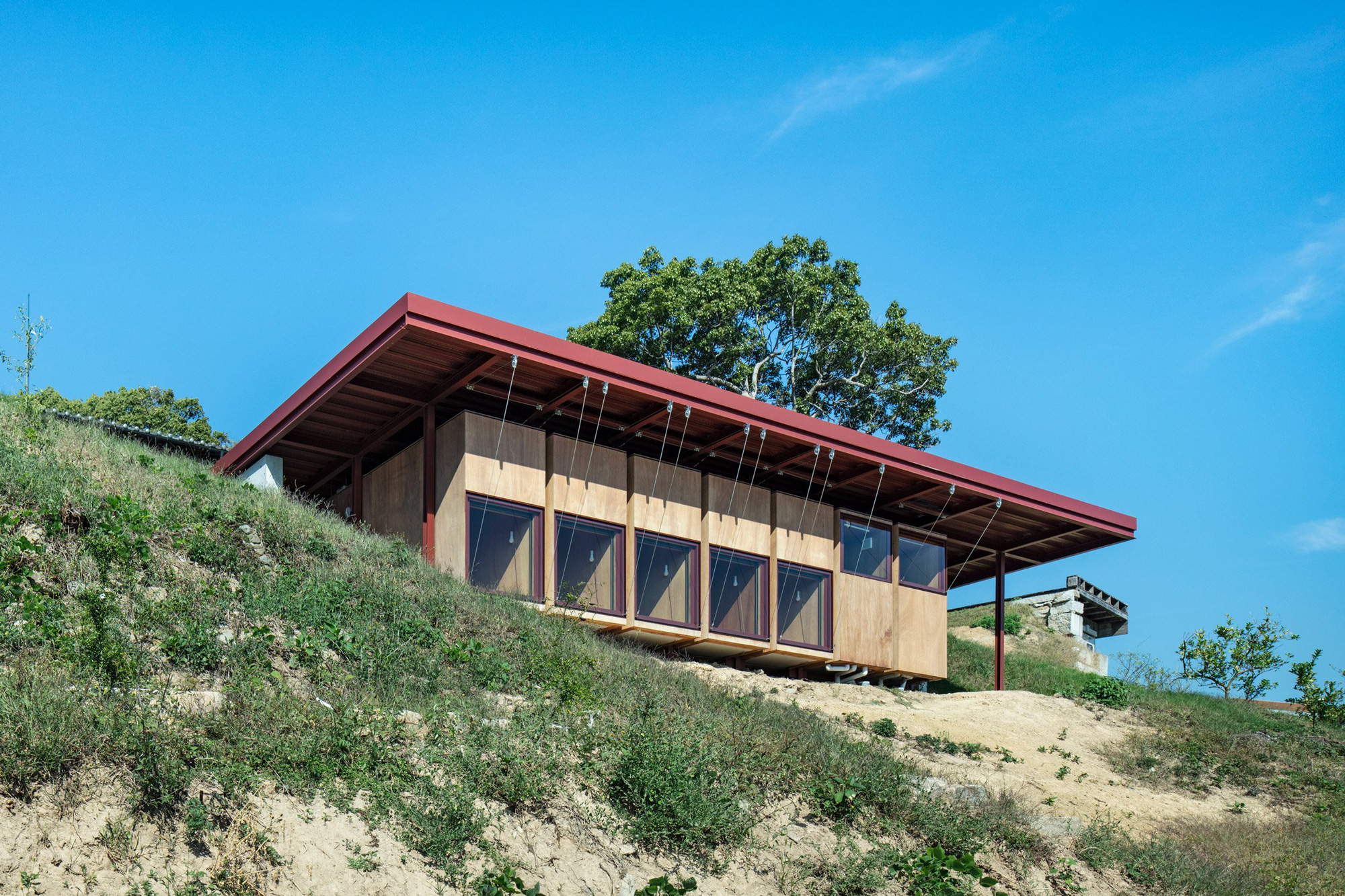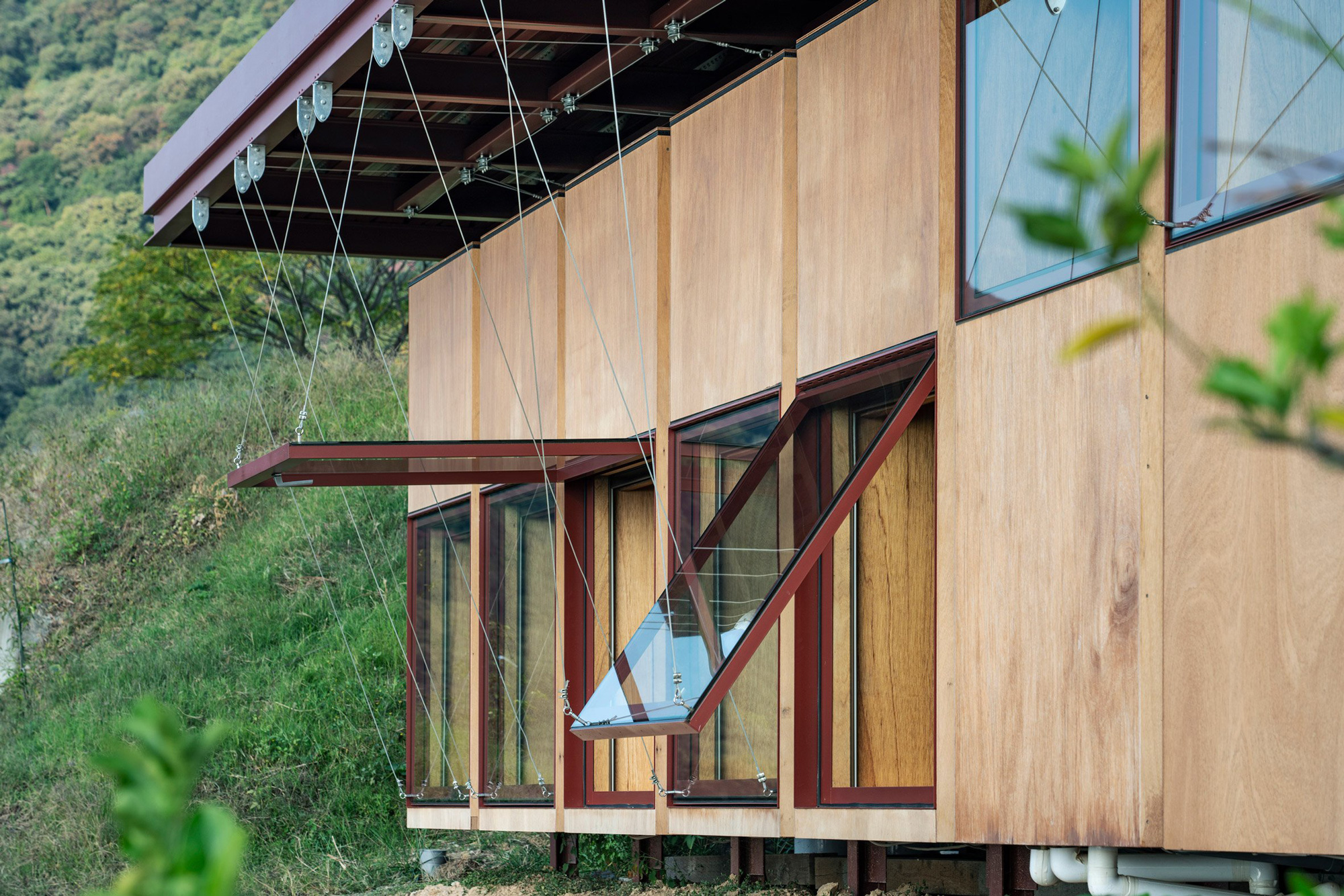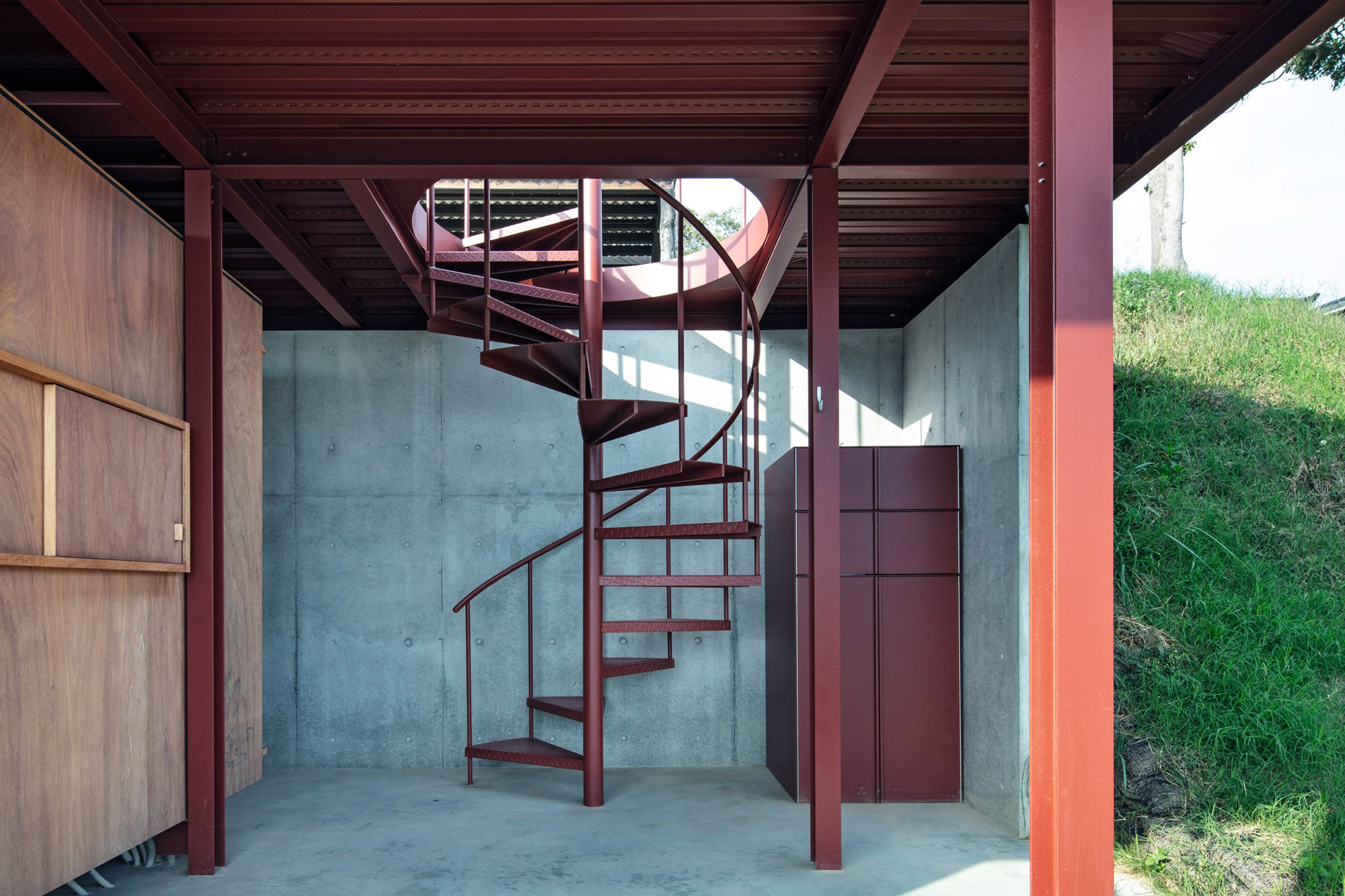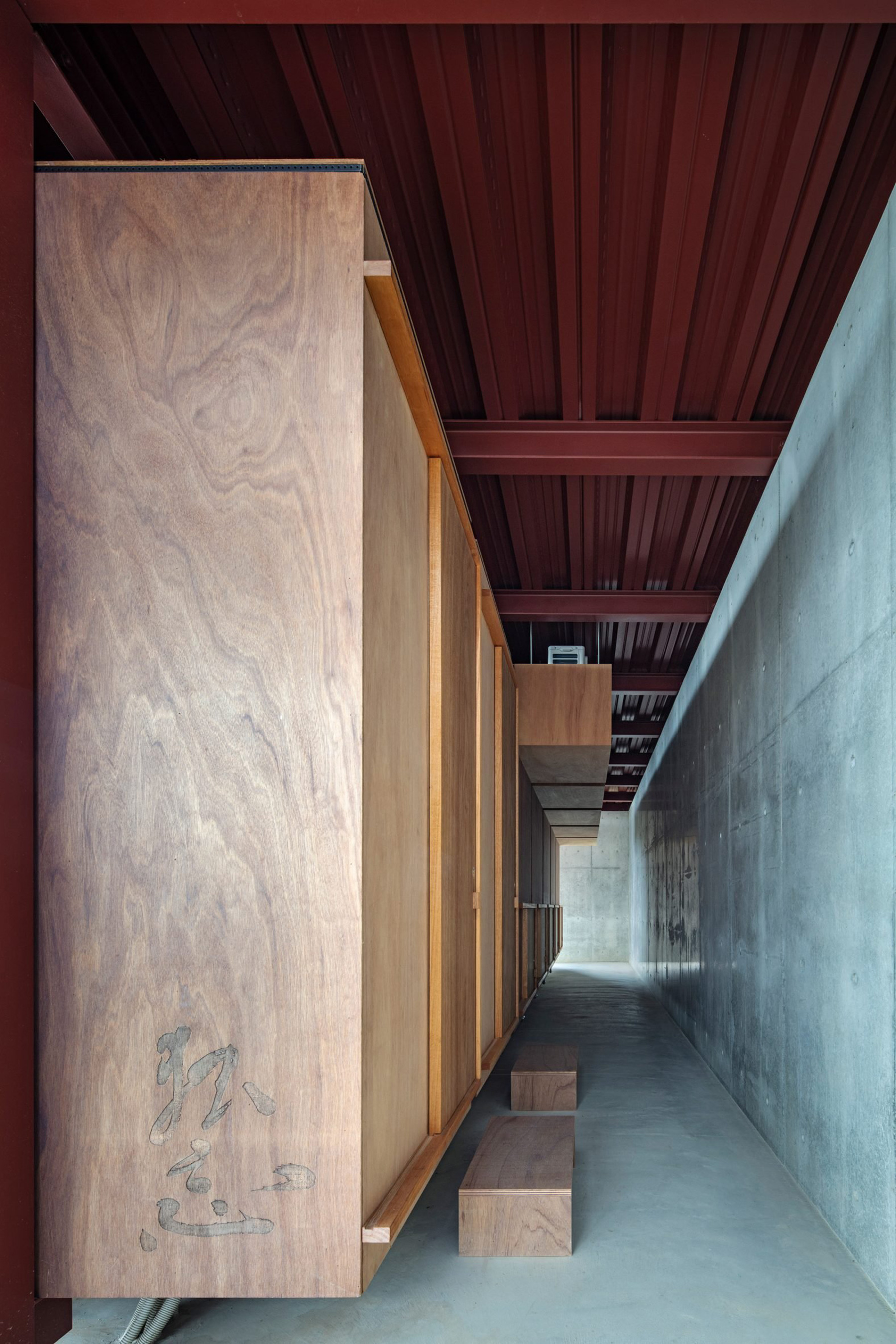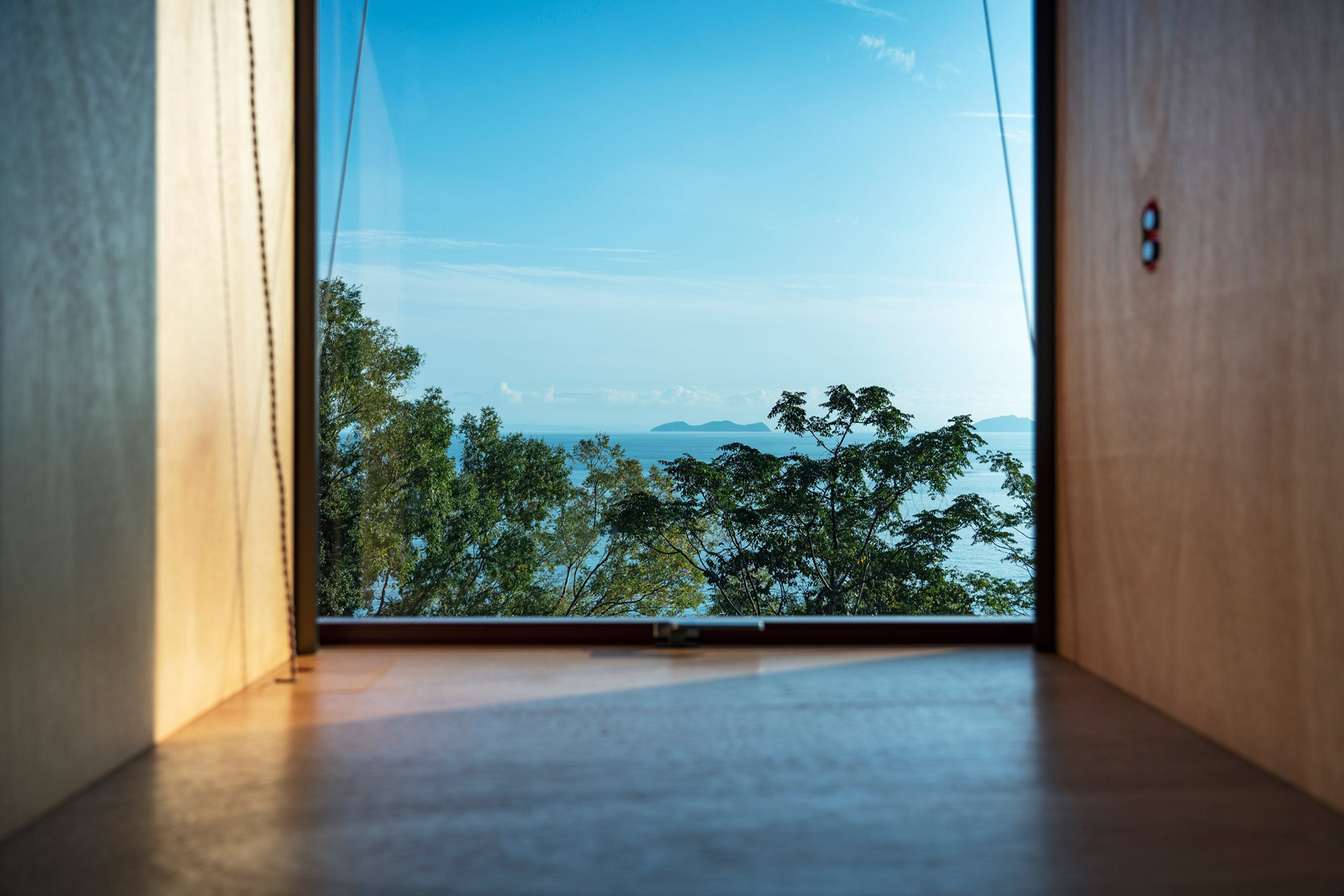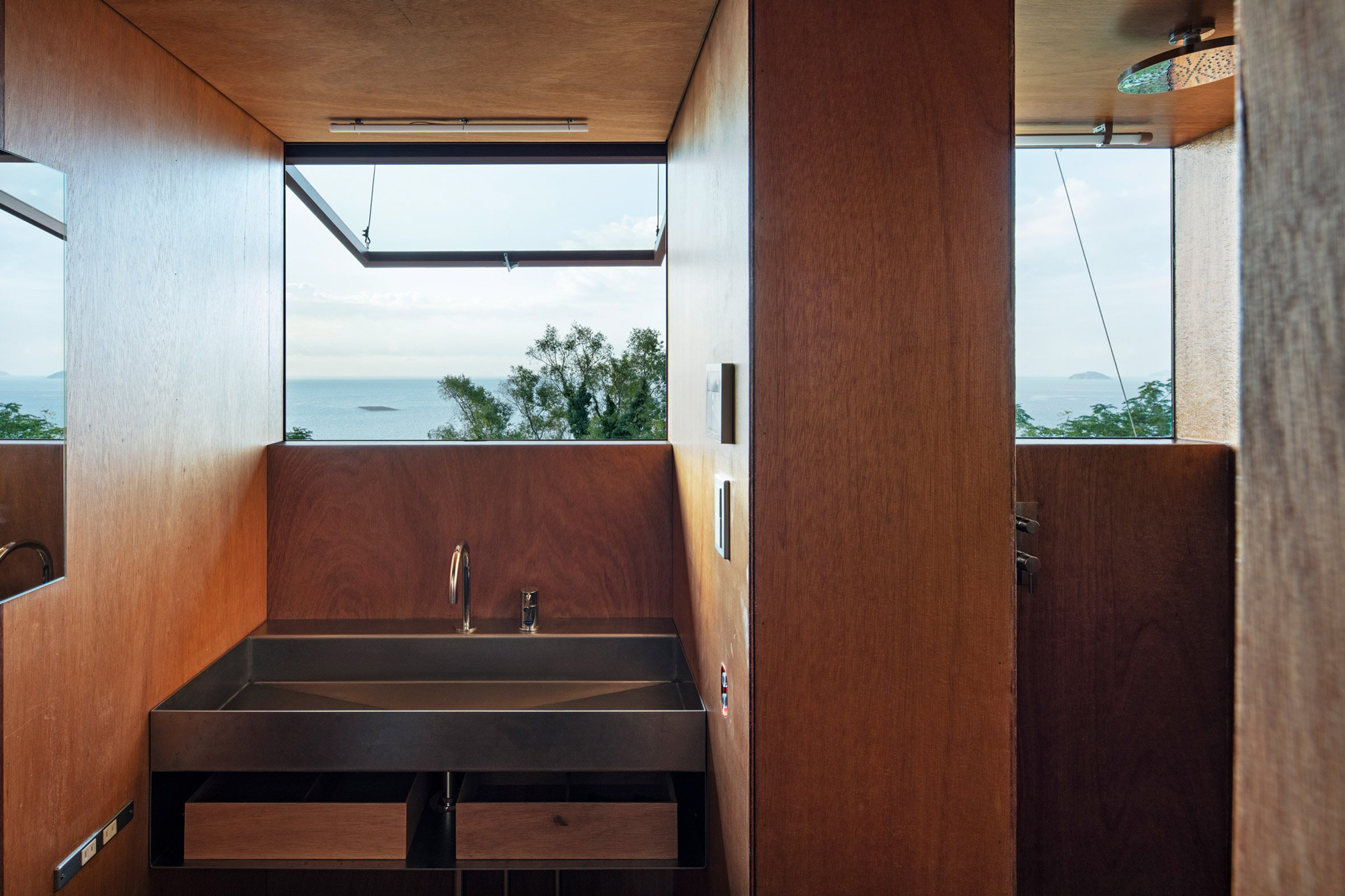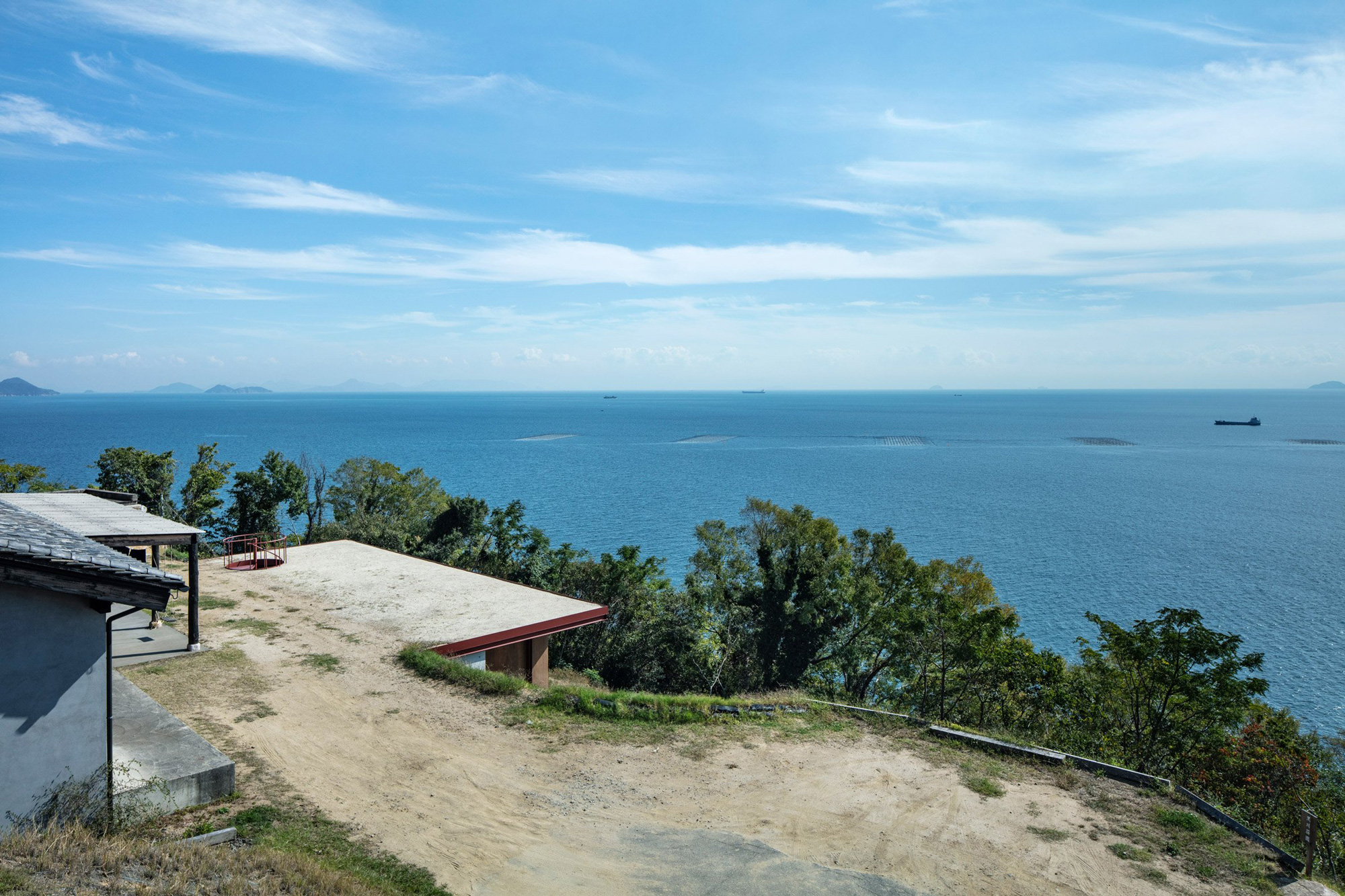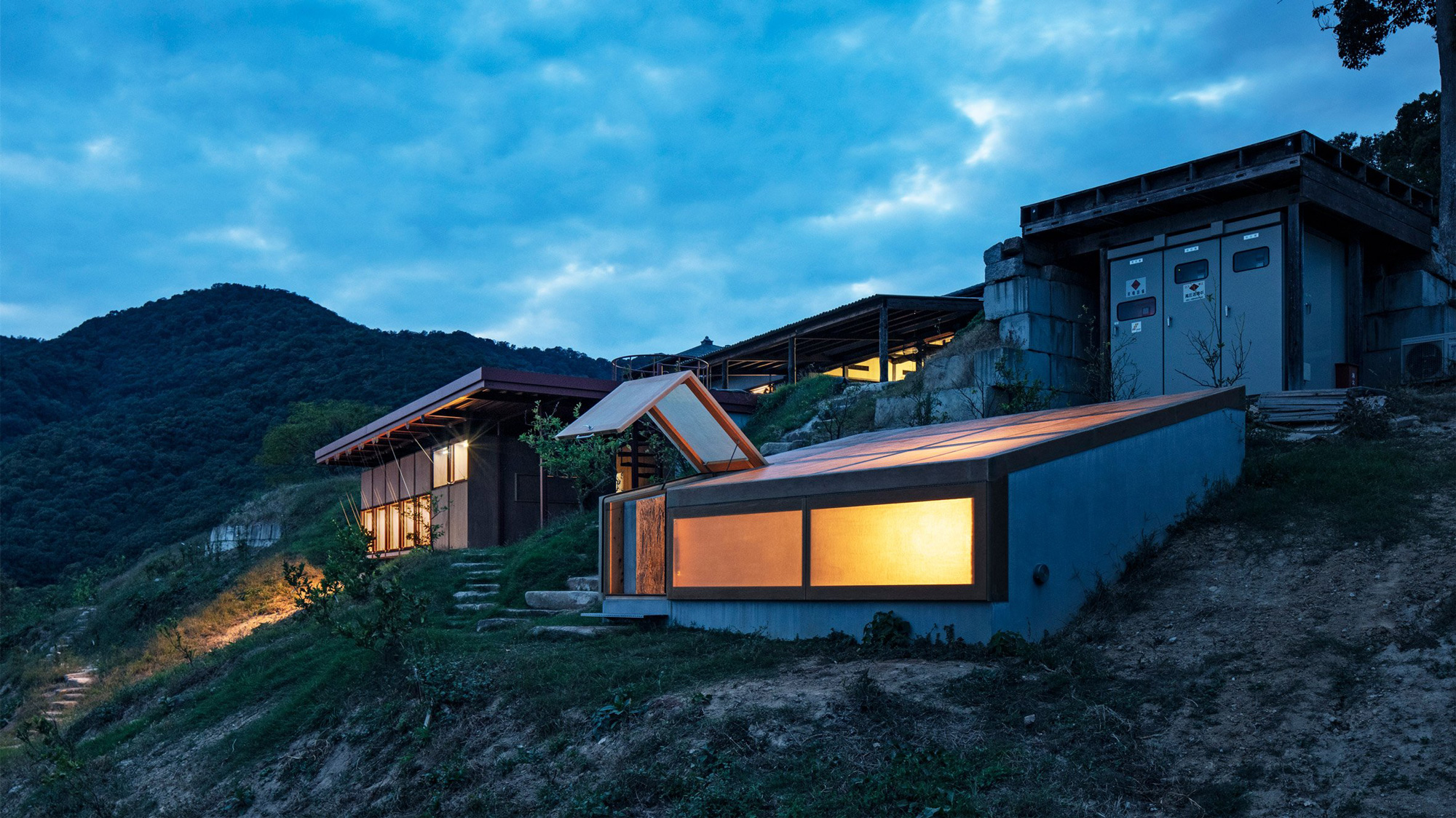A children’s guesthouse and a pub for the parents, beautifully nestled in a slope that overlooks costal views in Japan.
Built on a sloping site on one of the many islands of the Seto Inland Sea, Japan, Dokubo + El Amigo join the clients’ main house and existing tea room, guest suites, and dining room. Architect Jo Nagasaka, founder and principal at Schemata Architects, designed the two new volumes with a great respect for the landscape and for the relationship between the inhabitants and nature. Gently added to the sloping topography, slightly downhill from the main residence and other structures, the two buildings overlook the Seto Inland Sea to the south but don’t obstruct the views.
Inspired by the traditional shukubo accommodations provided by temples and shrines, the children’s guesthouse wears the name of “dokubo”, which translates to “solitary quarters.” This space houses five sleeping units, a shower and a toilet. With the roof placed at the level of the dining room’s floor above, this volume “disappears” from the setting. Indeed, only the top of a spiral staircase, which offers access to the interior, indicates that this is a living space. Descending on the stairs, one almost feels like plunging to an underground shelter, cozy and secluded, but with access to sweeping views of the sea. The doors of all rooms double as windows that open with the touch of a button, allowing the residents to fully immerse themselves into the tranquil setting and admire the coastal panorama.
The best of modern Japanese architecture and interior design, with a strong focus on creating meaningful connections.
Aptly named El Amigo, the bar is a gathering space where the parents can enjoy drinks or tea with friends. This volume also boasts a large window that frames a panoramic view of the sea. Additionally, the team installed a translucent roof that gorgeously filters the light during the day, similarly to traditional shoji screens. In terms of materials, the team kept the selection minimal. Apart from steel and reinforced concrete, the volumes feature wood, stone, and concrete surfaces. Tactility becomes a central element throughout both volumes, with a harmonious balance between smooth and rugged surfaces.
A gem of modern Japanese architecture and interior design, the Dokubo + El Amigo project inspires not only with its refined minimalism and use of tactile materials, but also with the connection it establishes between inhabitants on one hand and the tranquil living spaces and the serene beauty of nature on the other. Photography by Kenta Hasegawa.



